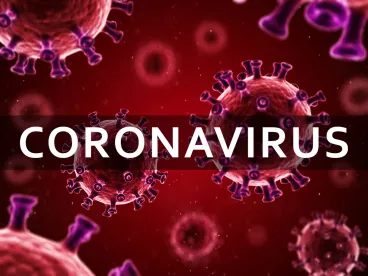What does it say?
In an effort to stem the transmission of COVID-19, ensure that the State’s general hospitals and trauma centers have sufficient bed capacity, and eliminate obstacles to obtaining medical supplies and providing treatment to all who need it, Governor Cuomo issued Executive Order No. 202.10 (“Order”) on March 23, 2020. The Order, entitled: “Continuing Temporary Suspension and Modification of Laws Relating to the Disaster Emergency,” will remain in effect through April 22, 2020. However, projections by the CDC and Weill Cornell Medical Center reflect that the State may not reach the incidence “apex” for several more weeks and/or may face “rolling curves” as the crisis further expands into Long Island, Westchester and upstate. As such, we anticipate that the Order will be periodically extended for the duration of the COVID-19 crisis.
The Order expands and/or modifies the definitions of several sections of the NY Education Law, N.Y.C.R.R., and Public Health Law (“PHL”), including to allow healthcare providers such as Physician’s Assistants (“PAs”), RNs, LPNs, and Nurse Practitioners (“NPs”), who are licensed and in good standing but not registered in the State, to practice in the State without civil or criminal penalties. NPs may also provide medical services in accordance with their education and experience levels without a written practice agreement or collaborative relationship with a physician, and PAs may also provide care to the same extent without physician oversight.
Importantly, the Order also modifies NY Education Law §§6527(2), 6545, and 6906(1) “to the extent necessary” as follows:
to provide that all physicians, physician assistants, specialist assistants, nurse practitioners, licensed registered professional nurses and licensed practical nurses shall be immune from civil liability for any injury or death alleged to have been sustained directly as a result of an act or omission by such medical professional in the course of providing medical services in support of the State’s response to the COVID-19 outbreak, unless it is established that such injury or death was caused by the gross negligence of such medical professional.
Executive Order No. 202.10, Emphasis added.
To whom does it apply?
The Order obviously applies to the individual health care professionals enumerated therein, which include: physicians, PAs, special assistants, NPs, RNs, and LPNs. Hospitals, nursing homes, doctors’ offices, and other “facilities” (including the converted Javits Center1) are not enumerated in the Order, but we believe they are covered for in-patient and outpatient care for two reasons. First, it is not necessary. Since immunity is expressly extended to “all” providers in the above fields, the same immunity necessarily applies to any hospital, nursing home, doctor’s office, “trauma center,” or other “facility” where those enumerated individuals provide care and for whom those “facilities” have exposure as a result of vicarious liability. There can be no vicarious liability if there is no primary liability as a matter of law. Second, naming traditional venues of medical care may unintentionally exclude other such venues. In the age of converting doctors’ offices and businesses to places fit for the practice of medicine, setting up tents to house patients, and whatever else can be imagined to assist in triaging, providing bed space for, and treating patients in connection with the State’s COVID- 19 response, naming specific medical facilities in the Order may cause the unintentional exclusion of make-shift “facilities” or “trauma centers” not known of but intended to be covered at the time the Order issued.
The Order does not specify whether the immunity provided to “all physicians” would apply to “graduates of foreign medical schools having at least one year of graduate medical education,” who are permitted to provide “patient care in hospitals” even without licenses, pursuant to the Order’s modification of 10 N.Y.C.R.R. § 405.4(2)(ii). The immunity clause also does not mention coverage for the out-of-state radiologic technologists and respiratory therapists who are in good standing in any other U.S. state who are permitted to practice in the State, pursuant to the Order’s modifications of NY PHL §§ 3502 and 3505, 10 N.Y.C.R.R. Part 89, 8 N.Y.C.R.R. Subpart 79-4, and NY Education Law §§ 8502, 8504, 8504-a, 8505, and 8507. However, the operative language of the Order in this context is “all physicians,” which arguably broadly applies to any person permitted to practice medicine in NYS pursuant to the Order. Of note, the Federal Tort Claims Act, not the Order, will most likely apply to health care providers involved in treating patients on the SS Comfort, even if it is staffed with NYS health care providers in the above-enumerated fields.
Finally, who is not covered by the Order? Paramedics/EMTs and laboratories performing COVID-19 testing are not expressly covered by the Order. Nor may they have a legal relationship with a covered provider sufficient to strengthen the Order’s reach to apply to their patient involvement.
What does it mean?
The Order is vague as to what care and treatment qualifies as being “directly as a result of any act or omission by such medical professional in the course of providing medical services…” in connection with the State’s COVID-19 response. The world of medical malpractice as we have known it relies not upon direct causation but upon proximate causation, which is an inquiry as to whether an act or omission was a substantial factor in bringing about a particular outcome. Analogies to judicial determinations regarding interpretation of contracts and arbitration clauses may provide some guidance here. Notwithstanding, the Order’s reliance upon the phrase “directly as a result of” arguably implies a more narrowed analysis of causation is warranted, but that does not mean it applies to only a narrow scope of treatment. In fact, given the public policy underpinning the Order, the scope of treatment the Order was intended to protect will likely be deemed broad. Additionally, the grammatical construct of the operative language of the Order arguably means the protections apply to a broad range of situations in which a medical professional provides care to both a known or suspected COVID -19 positive patient, and provides care to a non-COVID-19 positive patient but in a non-standard manner because of the limitations in resources, equipment, testing, staff, etc. imposed by the COVD-19 pandemic.
Here are some examples of acts and omissions that may result in serious injury or death that are arguably covered by the Order:
- Delay in diagnosis – delay in diagnosing a life threatening impeding condition, such as a myocardial infarction or stroke, because of crowded ERs or understaffing due to staff contracting COVID-19
- Premature discharge – discharging an ER patient who would have otherwise been admitted to observation before obtaining radiology results or labs because of lack of beds
- Withholding treatment – withholding ventilator treatment for a patient with low oxygen saturation or compromised lung capacity or choosing which of two or more patients get to use a ventilator
- Facility-acquired infection – patient infected with virus or bacteria due to unsterile environments in make-shift facilities or infrequent/insufficient disinfection of surfaces, or re-using personal protective equipment
But, would the Order provide immunity to providers in these situations?
- Inadequate staffing – failing to turn and position a patient with significant skin integrity issues due to understaffing from staff being placed in quarantine after diagnosed with COVID-19
- Inadvertent transmission of COVID-19 from staff to patient - Obstetrician infects a newborn and/or a pregnant woman in connection with delivery, leading to respiratory compromise and death
- Incorrect negative COVID-19 results – a primary care provider negligently gives patient “A” a negative test result of another patient “B” and patient “A” then infects an immunocompromised spouse who dies.
- Misdiagnosis of presumed COVID-19 infection - Misdiagnosing patients as having COVID-19 infection and failing to diagnose other conditions that present with similar symptomatology, such as bacterial pneumonia, COPD, emphysema, flu, and GI or throat infections
- Refusal of care/failure to provide in person clinical assessment – out-patient practice refuses to examine symptomatic asthmatic patient in office pending results of COVID-19 test, which have been delayed for around 7 days, leading to interim otherwise preventable development of bacterial pneumonia and need for in-patient oxygen therapy and other critical intervention
- Lack of supervision and monitoring due to understaffing - understaffing as a result of essential healthcare staff members being quarantined or self-isolating due to COVID-19 infection or exposure, which leads to patients or residents sustaining falls and related injuries, developing pressure ulcers, hypoglycemia or hyperglycemia, and other serious health issues
- Patient transfer – non-COVID- 19 infected patient sustained fractures from fall from gurney or involved in MVA en route during transfer to remote location from primary hospital site due to overcrowding of primary hospital with COVID-19 patients
Something to consider.
While the scope of treatment protected by the Order is likely broad, judicial determination through litigation will likely be necessary to flesh this out. In that regard, when law suits are inevitable filed in connection with treatment provided at this time, it may be wise to raise an affirmative defense based upon COVID-19 and this Order in your answer. In defending treatment during the time of this pandemic, it may be useful to obtain expert opinion support to argue there was no standard of care in the diagnosis, management, and treatment of COVID or a new standard of care during this unprecedented time.
In the interim, in it may be advisable to provide clients insight on ways to document, document, document patient charts when actions are taken “directly as a result of” COVID-19 considerations, as well as the emergent and other difficult attendant circumstances surrounding the uncharted environment befallen NYS health care providers in this crisis.
¹ The Order modifies 10 N.Y.C.R.R. § 405.45 “to the extent necessary” to allow “…the Commissioner of Health to designate a health care facility as a trauma center, or extend or modify the period for which a health care facility may be designated as a trauma center, or modify the review team for assessment of trauma center”



 />i
/>i

